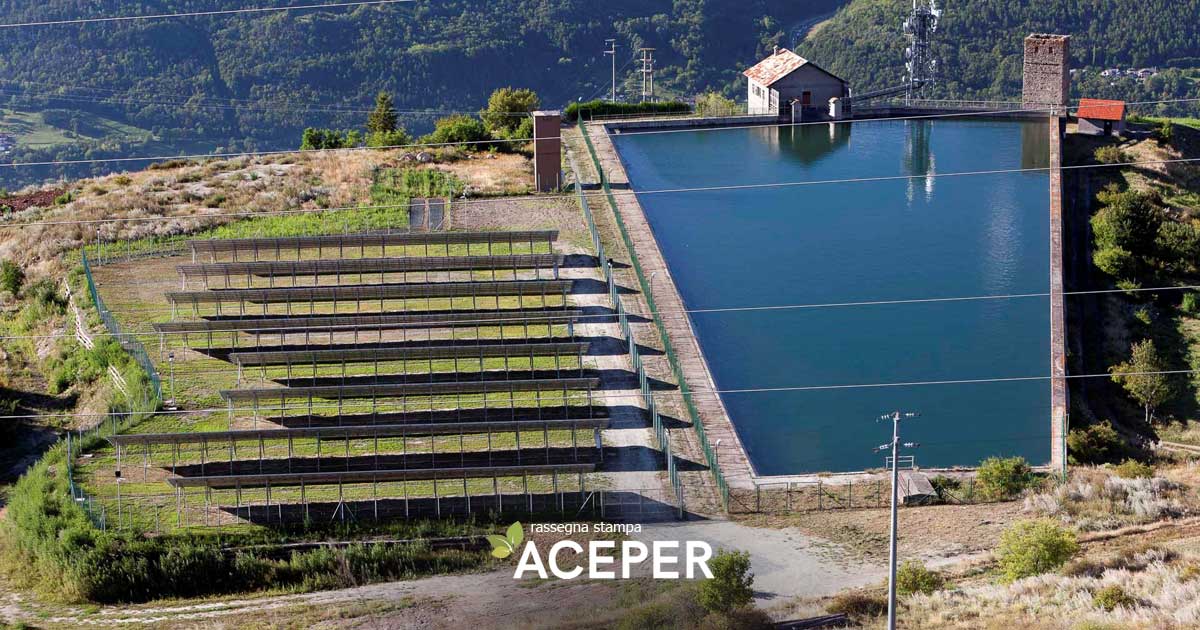28 March 2023

Let’s start by saying that the past 12 months have also been very complex, and the global energy landscape has changed profoundly, first due to the consequences of the pandemic and then because of the conflict between Russia and Ukraine. After months of health restrictions and lockdowns, the global demand for energy surged rapidly and simultaneously, putting a strain on the supply, which was unable to meet the demand. To aggravate the energy crisis, Moscow’s actions first reduced gas supplies to Europe and then led to the declaration of war on Kyiv.
This short-circuit prompted the EU and various European countries to quickly develop a new gas supply strategy. These events resulted in significant consequences in terms of energy costs, caused by the rise in gas prices, which continues to affect electricity costs.
The difficult situation necessitated a deep reflection on the EU’s energy policy, leading to immediate solutions: on one hand, a plan to secure storage, on the other, diversification of supplies, but above all, the desire of each country to aim for energy independence. In this regard, renewable energy sources are playing an increasingly important role.
01 Aceper’s Study on Photovoltaic Energy in Italy
Italy, one of the countries with the highest imports of Russian gas, has also had to reckon with its investments in the renewable energy sector so far. Among the most widespread renewable sources in our country, after hydroelectric power, is photovoltaic energy, which is gaining attention due to the ever-decreasing costs of its technology.
A detailed snapshot of how photovoltaic solar energy is impacting our territory has been provided by a study conducted by Aceper (Association of Renewable Energy Consumers and Producers), which published data relating to individual Italian regions. According to the study, we can discover which Italian regions are the most virtuous in photovoltaic production and which areas need to work harder on developing this green energy source.
The research examined 5,236 photovoltaic plants across 17 Italian regions and calculated the ratio between actual photovoltaic production and expected photovoltaic production, based on measurements using the official PVGIS tool.
What is it? The Photovoltaic Geographical Information System (PVGIS) is a program that allows for an actual calculation of an installation’s production, including projections for the coming years. It takes into account various factors: the installation’s location, the month of interest, the tilt, and the orientation.
After clarifying the research methodology and the sample examined, it’s time to reveal which regions in our country are the most virtuous.
02 The Ranking of the Most Virtuous Regions in Photovoltaics: Valle d’Aosta on Top
The smallest Italian region is where the greenest heart beats. Valle d’Aosta, with an area of 3,263 km² and 127,866 inhabitants, is the most virtuous Italian territory. The data that puts it at the top is unequivocal: 960,391 kWh (kilowatt-hours) actually produced versus an expected production of 1,011,502 kWh according to PVGIS measurements. The figure that leads the ranking is the ratio between actual and expected production, standing at 95%.
With a ratio of 87%, Emilia Romagna takes second place. Its numbers are excellent: 37,939,525 kWh produced and 43,840,630 kWh expected, placing it among the best Italian regions in the photovoltaic sector.
Piedmont climbs to the third step of the podium with a photovoltaic performance of 139,917,414 kWh produced and 162,741,031 kWh expected, achieving a ratio of 86%. However, Piedmont also holds the absolute record in terms of kWh produced from photovoltaics.
An 85% ratio is shared by three regions. This figure indicates the ratio between actual and expected production: Abruzzo reaches this with 20,100,052 kWh produced and 23,625,127 kWh expected, Liguria with 5,187,522 kWh produced and 6,108,499 kWh expected, and Lombardy with 66,305,239 kWh produced and 78,089,977 kWh expected. Notably, Lombardy is second only to Piedmont in photovoltaic production.
Trailing by just one percentage point is Veneto, with an 84% ratio, producing 49,221,066 kWh and expecting 58,691,563 kWh. The excellent absolute production data secures it the third position after Piedmont and Lombardy.
03 Other Regions in the Ranking
The list continues with the data for Marche, producing 20,328,123 kWh and expecting 24,622,400 kWh (83% ratio), Tuscany with 5,830,869 kWh produced and 7,263,032 kWh expected (80% ratio). At a tie in terms of ratio (79%) are Molise (with 1,589,155 kWh produced and 2,000,284 kWh expected) and Puglia (with 18,459,422 kWh produced and 23,406,458 kWh expected).
At the bottom of the ranking are Umbria, with 21,396,944 kWh produced and 27,506,185 kWh expected (78% ratio), Sicily (2,325,953 kWh produced, 3,144,591 kWh expected, 74% ratio), Lazio (16,105,440 kWh produced, 22,635,310 kWh expected, 71% ratio), Campania (13,893,494 kWh produced, 19,822,080 kWh expected, 70% ratio), Sardinia (49,792 kWh produced, 71,369 kWh expected, 70% ratio).
Basilicata is at the bottom, with 4,171,443 kWh produced, 6,836,095 kWh expected, and a 61% ratio.
04 The Spread of Renewables and Photovoltaics in Italy
Moving from specific data to the general overview, let’s do some more calculations regarding the spread of renewable energies in Italy: in 2022, energy produced from renewable sources covered only 18.9% of the national energy demand, with less than a quarter of this produced by solar power. These figures quickly highlight the delay our country has accumulated in meeting the EU’s greenhouse gas emission reduction targets, which range from 40% to 55% by 2030.
It is clear that to address the energy emergency, much more investment is needed. Among various solutions, the potential of ground-mounted photovoltaics stands out, which, thanks to technological advancements over the past 15 years, represents the most immediate and cost-effective solution for generating electricity from renewable sources.
It is unrealistic to think that the EU’s power targets can be reached solely by investing in rooftop panels, which primarily concern private individuals and cover only 22% of the total, according to data from Terna.
The reality is that the sectors most in need of energy are industry (44%) and services (32%). Italy should aim for a target of 52 gigawatts of photovoltaic installations by 2030, a number still far off considering the average annual power output is 1GW, compared to the required 6GW.
See here the article from Enegie Mag dated 28/11/2022
“Source Energie Mag”

Press review
For information


